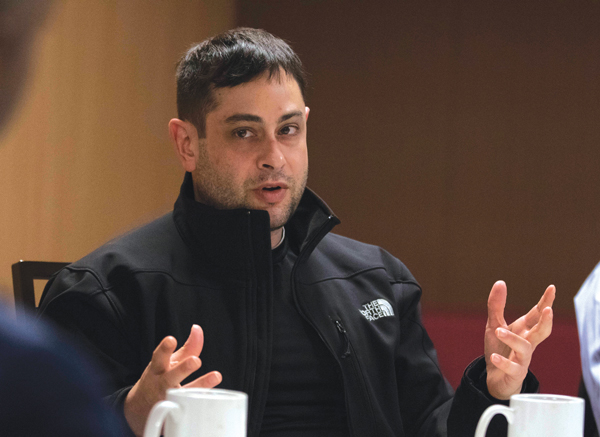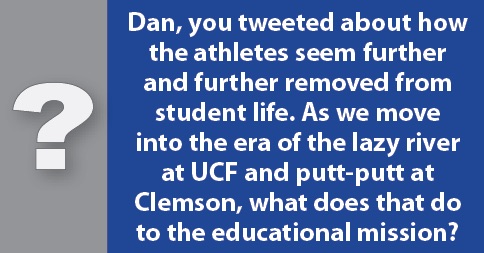Editor’s note: This is part of our sports media roundtable from the Final Four. For the main portion of part two, click here. For part one in our April 10 issue, click here.
■ WOLKEN: Everybody talks about the facilities arms race and I understand that. But these schools spend far more money on amenities and facilities to attract non-athletes on their campuses. I don’t blame athletics for doing the same thing. The problem I have is that, more and more, these facilities are being built literally to attract the student athletes every hour when they’re not in class. That’s where you rob people of the global university experience. Clemson wasn’t even coy about it. They said they wanted a place for our players to be every second they’re not at practice or in class. Well, why are they in college? That’s not what college is.
■ ELMORE: It’s the new segregation.
■ BOIVIN: And academically they’re taking online classes. They’re all building their schedules around online, online.
■ WOLKEN: I was at Stanford last week talking to a football player about his lifestyle there. Part of the reason he wanted to go to Stanford is that when he’s not doing football, he doesn’t have to be around other football people. He’s just amazed at kids from other countries, and his neighbor just sold his company for $18 million. That’s the kind of thing college should be about, but Stanford is the exception.
■ FORDE: Stanford is the exception. My daughter is going there in the fall (as a swimmer) and her roommate will not be an athlete. First year, you live with a non-athlete. I think it’s great. Could be somebody from Africa, Asia or Palo Alto. I wish more schools would consider doing that. What’s the phrase for them — NARPs, non-athletic regular people.
■ WILLIAMS: (At Duke), I loved integrating with other students. It’s just funny watching kids these days, there’s such a hesitation because of this (phone), they don’t have the luxury of making those same mistakes a regular student does make. So, how close do you let somebody in your life?
Podcast highlights from the discussion:
 |
A tweet on athletes and student life by USA Today columnist Dan Wolken sparked discussion.
Photo by: DARRYL WEBB
|
■ ELMORE: Not only that, the star athlete who has been coddled from the beginning, there’s an insecurity beyond sport. Integrating into a community, there’s an inferiority complex. … (At Maryland) I stayed at one dorm because I wanted to be away from the basketball players who had a floor in another dorm. As soon as I heard they were moving to this dorm, I said, “I got to go to this other dorm.” It happened to be the co-ed dorm. But I see these guys enough. Guys from that team are the closest of friends, but I broadened my circle of friends and I learned so much from having a diversity of friends.
■ O’NEIL: We’re doing a disservice by segregating them. Even if they go into a professional sport, they’re going to have to deal with all kinds of people. If all you’ve ever been around is other basketball people, you’re not adequately prepared to be a professional athlete. Players I talk to are so excited to talk about things besides basketball.
■ WILLIAMS: There’s a huge egotistical piece to this too … because you’re constantly being asked about yourself. It’s difficult to break from that mold.
■ O’NEIL: And you’re 18 and you think you have all the answers and frankly you have none.
■ BOIVIN: Can you imagine having your life scrutinized that way at 18?
■ O’NEIL: I tell athletes all the time that I do not envy you, in the age of these things (phone). It’s got to be exhausting.
■ WILLIAMS: Grayson Allen, I feel for him. The kid tripped somebody and he was wrong. I don’t know how I would try to help a kid like that. When you see the amount of venom spit at him …
■ O’NEIL: In his defense, every time he did something wrong, he showed up in that locker room and answered questions. I give Krzyzewski credit. He has to face that music; that’s part of growing up. How many people would have said, “Hide him.” Eventually (Duke) did circle the wagons and lock the doors.
■ CULPEPPER: The other night I was at a dinner and Wayne Turner, the point guard on the 1998 Kentucky team, said our beat writer wrote a story about his (shooting form). For a season, he was scared to shoot because of this one article. Suddenly I realized, “That’s what it’s like for them.” Very strange.





